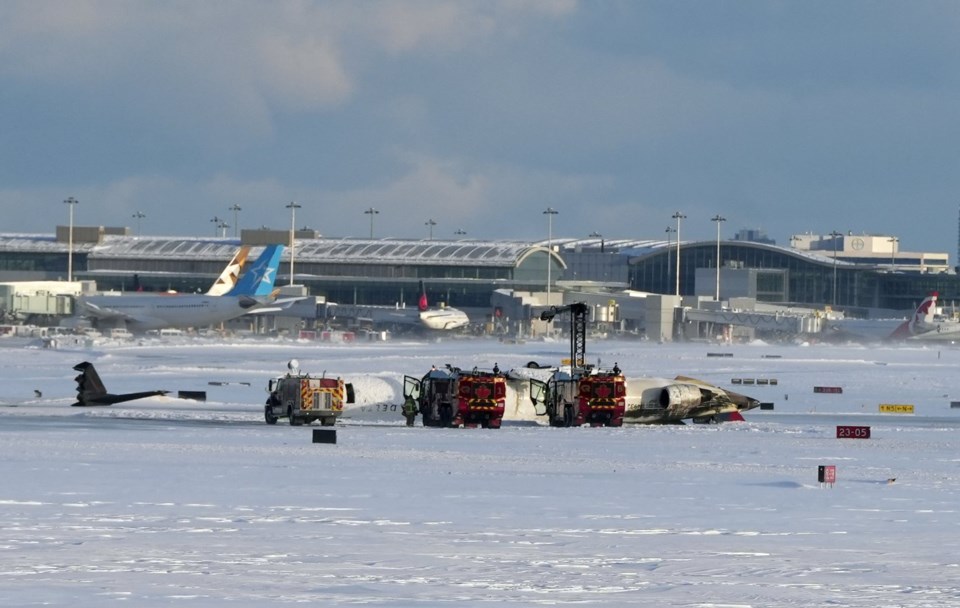An aviation expert with more than 30,000 flight hours says it is “very rare” for an aircraft to end up upside down in a crash, as was the case with a Delta Air Lines plane that flipped on the tarmac at Toronto’s Pearson Airport Monday.
J. Joseph, a 29-year veteran aviator in the United States Marine Corps., says it is much too early in the investigation to jump to conclusions about what happened, but conditions in Toronto were “quite windy” at the time of the crash.
Joseph says high winds, especially crosswinds that blow perpendicular to the plane, could “present certain challenges to pilots” as they try to navigate the landing at Pearson Airport.
The flight from Minneapolis crashed Monday, intact but upside down, with the wheels of the Mitsubishi CRJ-900LR jutting into the air on the snow-covered tarmac.
Several of the 76 passengers and four crew members were injured.
In an audio conversation between the airport tower and the Delta flight shortly before landing, the tower warned the pilots of a possible air flow “bump” in the plane’s landing glide path stemming from an aircraft in front of it.
But Joseph says it is unlikely that was a factor in the crash, given that air-traffic control is exceptionally skilled at planning adequate space between planes to prevent too much impact from wake turbulence, adding that the strong winds would present a bigger risk.
“Toronto in the winter with high, gusty winds, it could be very challenging,” he says. “Those high winds and with regard to runway alignment, perhaps crosswind components in winds extremely strong from the left of the right of the aircraft, present certain challenges to the pilots.
“I've got 30,000 hours of flying airplanes. It never gets easy. I don't care how much experience you have. Every set of circumstances is different, and the conditions change very dynamically.”
But Joseph says how the plane ended upside down will still need to be explained.
"For an aircraft, particularly a large transport-category airplane, to end up in under those circumstances — upside down — is rather rare," he says. "It has happened in the past, but I will tell you candidly, it is very rare."
Joseph also says the fuselage being preserved in the crash bodes well for the investigation, as the plane’s “black box” cockpit voice recorder and flight data recorder will both likely be intact.
“There are going to be a lot of good data, real time, extracted from the data recorders, as well as the pilots and the flight crew being able to give statements,” he says.
“You learn a lot from mishaps and the investigation. The crux of why you do it in the first place is to preclude those types of mishaps from reoccurring.”
This report by The Canadian Press was first published Feb. 17, 2025.
Chuck Chiang, The Canadian Press



